Thai Traditional Medicine: From Thai Massage to Spiritual Wellness
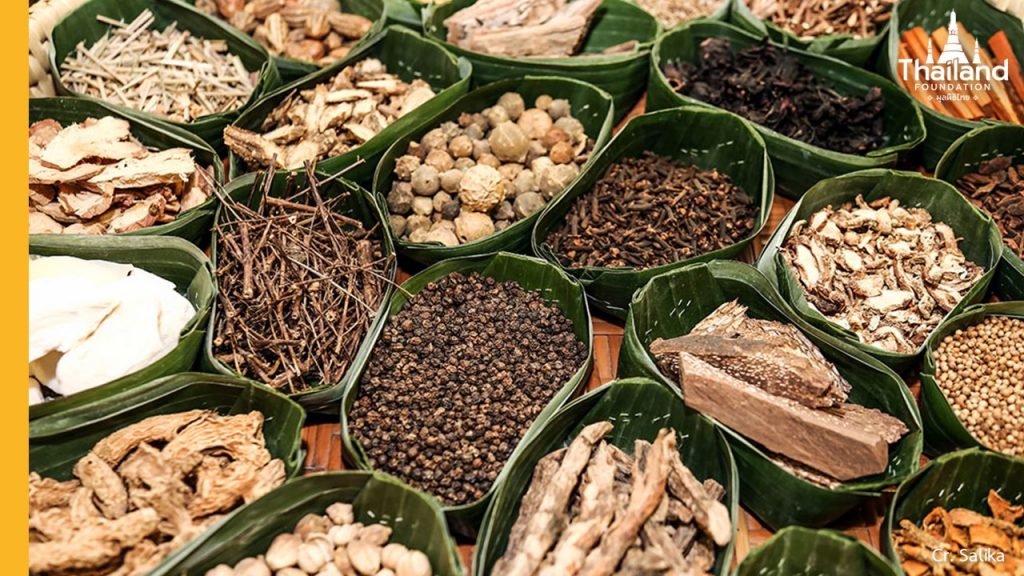
The Thai massage is appreciated around the world. Even if you’ve not yet experienced one, at least you must have heard of it. It is a truly relaxing therapy that efficiently relieves aches and pains, restores flexibility of the muscles, stimulates blood circulation, and melts away stress with the heavenly fragrances of aromatic herbs. Imagine you were a tourist who has been walking around the city all day until your feet get sore, how wonderful it would be to get a good traditional Thai foot massage. However, Thai massage is only one little healing sachet in the trove of the Thai traditional medicine or TTM. Today, we’ll explore the world of TTM that you might have never seen before.
What is the Thai Traditional Medicine?
The Thai traditional medicine is a method of healing and boosting vitality using herbs as food and medicine. TTM bases its diagnosis on the theory of four elements, along with other Thai beliefs that are influenced by Buddhism and Brahmanism. This extensive knowledge has been passed down for hundreds of years. In 2000, TTM was officially recognized by the Thai government as a healing method, supported by the Protection and Promotion of the Thai Traditional Medicine Act.
As mentioned, at the core of TTM is the theory of four elements, which states that the human body is composed of earth, water, air, and fire. Earth is the main element of all human beings’ bodies while the other three elements differ in varying degrees, resulting in different health conditions, physical characteristics, and temperaments. Following this line of thought, sickness occurs because the elements in the body are out of balance, but the balance can be restored with the right food and herbs and healing methods that correspond to the element composition of a person.
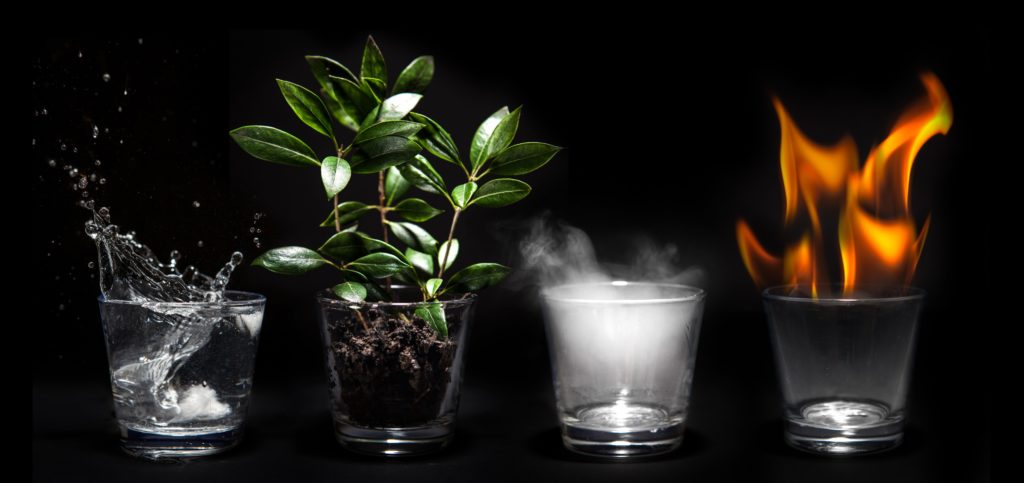
(Photo credit: technologychaoban)
History
We find evidence of TTM in the Sukhothai period (1238-1463) in the Tribhumikatha text, mentioning the treatment of skin diseases. Although it did not specify what kind of medicine was administered, it was assumed that some forms of the Thai traditional medicine were practiced, using herbs and massage, along with spiritual rituals.
In the Ayutthaya period (1350-1767), medicine was extensively studied and developed, with laws regulating medical practices. There was a record of an epidemic that killed a large portion of the population, but the people managed to finally eradicate the disease. The survivors were treated back to health without having to abandon the town as before. This showed a progress in medical practice of Ayutthaya. During the reign of King Narai the Great (1656-1688), when Ayutthaya peaked in foreign trades and contact, a collection of medicinal knowledge was compiled under the Tamra Osot Phra Narai (ตำราพระโอสถพระนารายณ์) or King Narai’s Compendium of Medicines. The text not only includes medicines derived from TTM, but also incorporated medicinal knowledge, such as Western and Chinese medicines, as well.
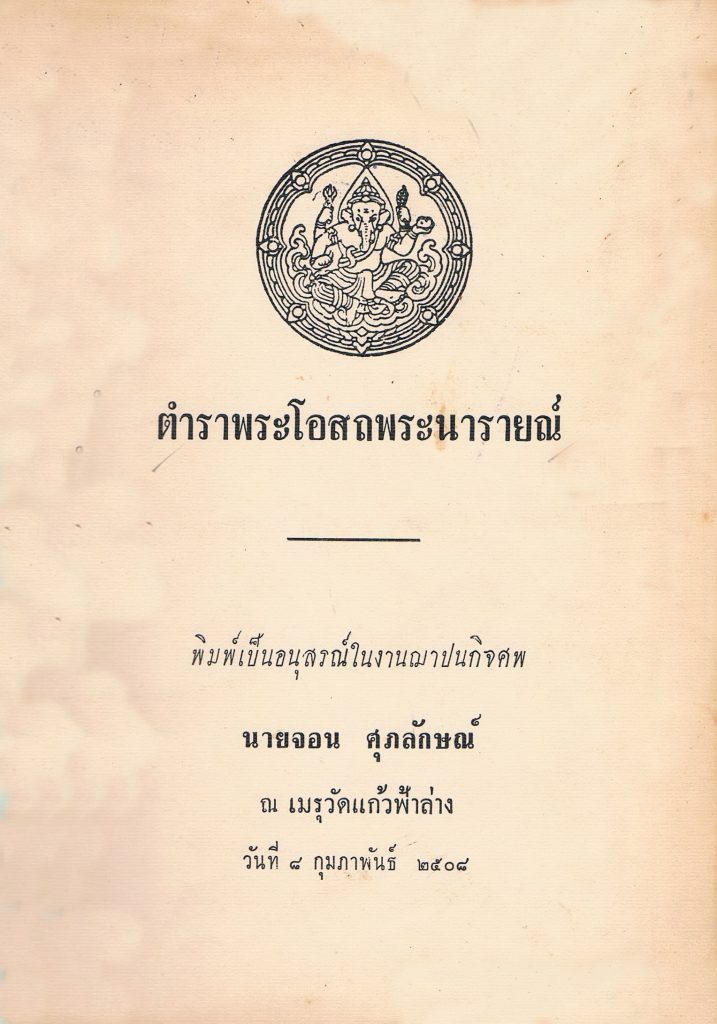
Tamra Osot Phra Narai (ตำราพระโอสถพระนารายณ์)
(Photo credit: หอสมุดแห่งชาติเฉลิมพระเกียรติ ร.๙ นครราชสีมา)
After the fall of Ayutthaya, the capital of the kingdom was moved to Thonburi and later Bangkok. During the reign of King Rama I (1782-1809), who established Bangkok as the new capital, a campaign was initiated to regather knowledge and expertise lost during the fall of the old kingdom. This included medicine. When the King ordered the reconstruction of Wat Pho, he also commissioned for medicine formulas to be engraved within temple walls. This ensured that the public had a free and open space to study medicine for generations to come. Later, his grandson, King Rama III, would commission sixty murals documenting therapeutic practices, including nuad Thai, as well as eighty statues depicting stretching exercises and gardens of rare medicinal herbs and spices to be erected on temple grounds.
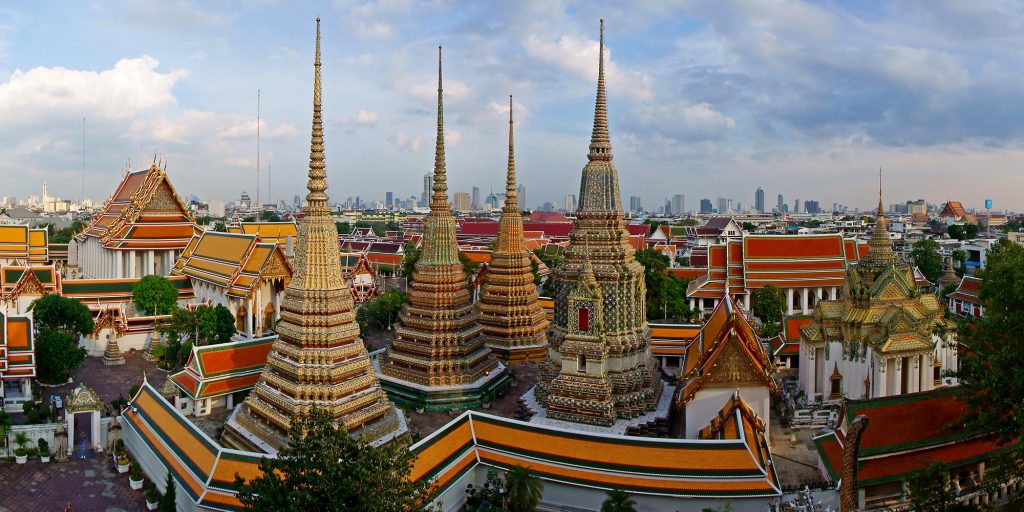
Wat Pho
(Photo credit: Wat Pho)
In the modern era, the late King Rama IX built upon the legacy of his predecessor by ordering the establish a Thai traditional medical school at Wat Pho Temple. The school draws on the temple’s archive of traditional Thai medicine texts, to teach medicine, midwifery, manual medicine, and pharmacy to people. This marked an important milestone in the revival of TTM in modern times. Most notably, as Wat Pho became a popular spot for tourism, Thai massage also gained world-wide acclaim due to its popularity amongst tourists.
Techniques of the Thai traditional medicine
- Herbology and medicine – the knowledge and use of the medicinal plants, animals, and other natural substances. Examples of traditional medicine include:
- “Ya dom” (ยาดม) is a Thai inhaler, made of either dry or liquid aromatic herbs, contained in a small, easy-to-carry bottle or stick. If you’re feeling dizzy or nauseous, just a few sniffs of ya dom can make you feel much better. It also works wonder in relieving nasal congestion, cold, muscle pain, and insect bites. The inhaler is for external use only, and primarily composed of menthol, camphor, borneol and other herbal extracts from peppermint, clove or eucalyptus. For Thais, ya dom has the most magical power to pick them up in any situation. Read more about it here.
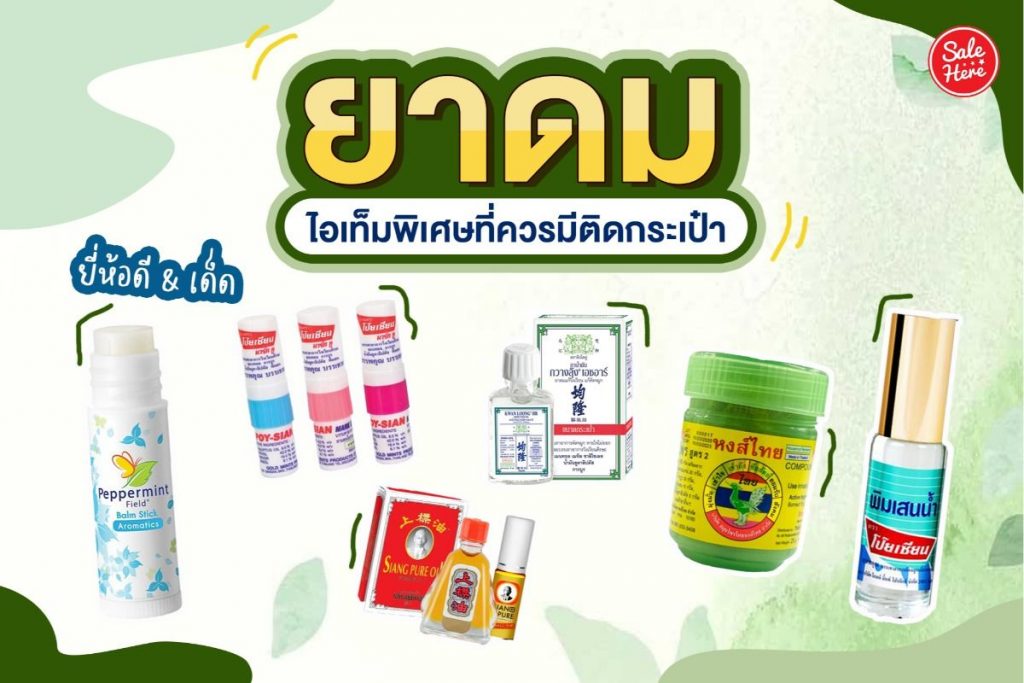
(Photo Credit: Sale Here)
- “Ya hom” (ยาหอม), or fragrant medicine, is made from a variety of herbs, spices, and aromatic plants. It is similar to ya dom as you can inhale it, but ya hom can be orally taken simply by dissolving the powder in water and sipping it. Designed to balance the four elements of the body, relieve bloating, flatulence, fatigue, and insomnia, ya hom will work its magic by expelling gas pain, then activating the power of water and fire elements, bringing the blood circulation and the metabolism back to their healthy condition. Read this to find out more about ya hom.
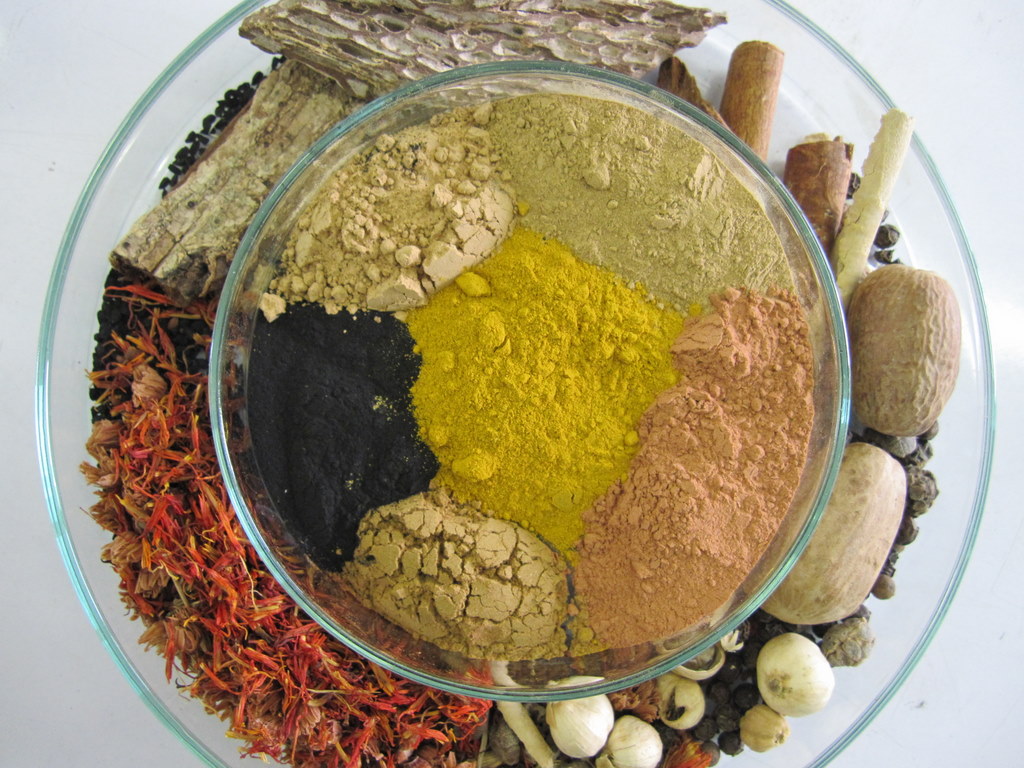
(Photo credit: thaihealth.or.th)
- Bodily Manipulation – various hands-on techniques that are used to manipulate the human body into desired states. Examples include:
- “Nuad Thai” or Thai Massage is a form of therapeutic touch. A masseuse will use his or her thumbs, elbows, forearms or feet to squeeze, roll, stretch, and press on different parts of the body to stimulate blood flow. Thanks to its prominent health properties, the Thai massage has been inscribed as a UNESCO Intangible Cultural Heritage. If you’ve never had a Thai massage, and think of trying it, make sure to give this article a read.
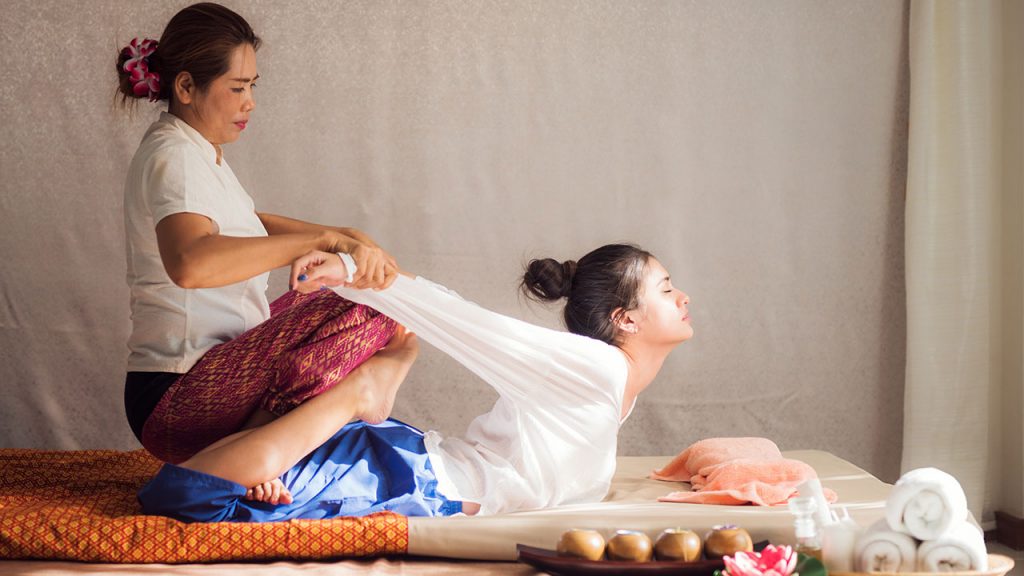
(Photo credit: Thairat)
- Bone setting is another form of healing linked to the Thai massage. Not a cure for illness, it is a therapy to restore balance to the bone structure in order to let it heal naturally, and preventing the bones from pressing or crushing against one another. Before undergoing this therapy, a person needs to receive a massage to relax the muscles and tendons.
- Spiritual Wellbeing – the practice of tending to mental and emotional health in conjunction with physical health. Thai traditional healers believe that a healthy mind is crucial for a healthy body. The most famous example is “Riak Khwan” (เรียกขวัญ), or “soul retrieving”, which constitutes the spiritual part of ancient Thai healing wisdom. In addition to the four elements, our body also has the “khwan” or “soul” that controls and holds body and mind together. If the body is sick, khwan will also be affected, and vice versa. If physically ill, we can use herbs to relieve bodily pains. However, when khwan is suffering, we have to perform the “Riak Khwan” ceremony to retrieve the lost spirit. Once khwan is reinstituted, the body will be able to find its way to recovery. There are various types of Riak Khwan ceremony, but the three main purposes of this ritual are 1) to give patients moral support, 2) to verify if the patient’s khwan is safe and sound inside the body, and 3) to find the cause of the illnesses.
- Midwifery – knowledge and practices centered around pregnancy, childbirth, and post-partum care. Childbirth is a unique and powerful moment that marks the beginning of a life. From a medical perspective, it is also a moment where both the mother and the baby are at risk, and both of them need great care and attention from medical professionals. Recovering from childbirth is equally daunting. Some new mothers choose the Thai traditional therapies to help their bodies return to normal faster. In addition to traditional medical remedies, some hospitals in Thailand offer traditional medical care for postpartum mothers. Some methods include massaging with herbal and salt compresses, wounds healing with heat, and herbal steam. These methods improve the blood circulation of the mothers, and help the uterus contract and shrink back to its pre-pregnancy size. One of the most famous example of post-partum care in TTM is the historic practice of yu fai.
Ethics and Relationship with Teachers
To become a TTM practitioner is, in its most fundamental essence, to dedicate oneself to a life of compassion: helping alleviate the suffering of others through curing their illnesses. One of the most important values upheld by Thai traditional medical practitioners is respect for teachers. A prospective TTM practitioner must fist seek out a teacher before being accepted into the field. Traditionally, a teacher may place a series of tests upon the prospective student to ascertain his or her moral qualities and endurance before the acceptance occur. Once accepted, the teacher passes on medicinal knowledge to the student, both theoretical and functional, while the student practices under the watchful eyes of the teacher. The teacher also set forth sacred rules that the student are expected to follow. In modern ethical terms, these rules can be viewed as a method to preserve the good conduct of practitioners, who must act with utmost compassion toward patients, colleagues, and fellow professionals. They must be willing to devote themselves to helping people and safeguarding their knowledge from being abused and misused. Only when the teacher deems the student to be fully mastered and proven in moral character is the student allowed to step forth to become full practitioners on his or her own.
Jivaka Komarabhacca, an ancient Indian physician who treated Lord Buddha, is regarded as the father of the traditional medicine. He invented many forms of remedies, which have been preserved and passed down through Buddhist teachings. It is believed that Jivaka Komarabhacca’s teachings still pose a great influence on the Thai traditional medicine and the values of medical practitioners until today.
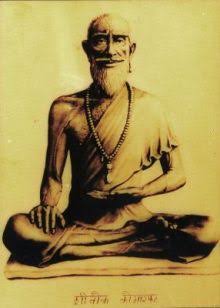
Jivaka Komarabhacca
(Photo credit: LAVANYA SAMINENI)
To pay respect to teachers, TTM practitioners often observe the Wai Khru, or teacher reverence ceremony, to express their gratitude. The ceremony differs for each fields and lineages of TTM. Some may involve still-living teachers, while others invoke the presence of deities and deceased teachers. Many ceremonies also invoke the presence of Jivaka Komarabhacca as patron of traditional medicine. Aside from being a time of reverence, the advent of Wai Khru is also a time for practitioners to apologies to their teachers for any misconducts or breakings of their teachers’ rules. Thus, Wai Khru becomes a time to remind practitioners of their ethical conducts and of the rules set forth by their masters.
Thai Traditional Medicine Today
The Thai traditional medicine has been around for centuries, but in the 19th century, it faced competition from the rise of the Western medicine. However, it has proven to be resilient and has not only survived but even thrived in the modern era. Particularly, Thai massage and Thai herbs are widely recognized and used globally. This has propelled Thailand to be a hub of health and wellness, including the booming spa industry. TTM, such as inhalers and balms, are proudly sold alongside modern medicine.
Seeing the great potential of this medical field, many universities in Thailand offer Thai traditional medicine programs where students can study all four areas of TTM: medicine, pharmacy, manual medicine, and midwifery. Graduates can work as physiotherapists, oriental medicine practitioners, naturopaths, medicinal product developers, health entrepreneurs, or even become Thai traditional medicine academics and professors, which are still in short supply.
Conclusion
Thai traditional medicine is an invaluable treasure that reflects the wisdom of the Thai people, rooted in a deep reverence for nature. The belief that “food is medicine” and the ability to capture medicinal properties in plants and observe the human body are hallmarks of this science. It also embodies the core values of respect for teachers and life, as well as compassion, the fundamental quality of caregivers. These principles, along with an openness to adapt and evolve, have allowed the Thai traditional medicine to survive and integrate itself into the modern world.
The story of Thai traditional medicine is another admirable aspect of Thai cultural heritage. The practice exemplifies the depth of Thai local wisdom. The Thai characteristic of respect is represented through respect for nature and teachers, while the value of compassion is represented through practitioners’ goal to help others. The history of Thai traditional medicine, as well as its existence in modern times, also reflect the open-minded attitude that Thai people have towards adapting to changed and integrating positive outside influences. Join us in exploring more stories of Thailand and the Thai people, as we take you on a journey to discover Thainess.
Sources
- https://ttcmh.dtam.moph.go.th/index.php/2017-04-10-01-45-31/33-2017-05-01-07-31-28
- https://www.gj.mahidol.ac.th/main/ttm/tard/
- http://lib.payap.ac.th/webin/ntic/essay/reak%20pdf
- https://www.youtube.com/watch?v=qRVG3qY-HKE
- https://bit.ly/3XFEIca
- https://www.youtube.com/watch?v=xlmFRTK4fP8
- https://ttcmh.dtam.moph.go.th/index.php/2017-04-10-01-45-31/33-2017-05-01-07-31-28
- https://ttcmh.dtam.moph.go.th/index.php/knowledge/read-more/34-proj-1.html
- https://bit.ly/3huikmV
_______________________________________________________________________________________
Author: Soonyata Mianlamai
Editor: Tayud Mongkolrat
14 March 2023


